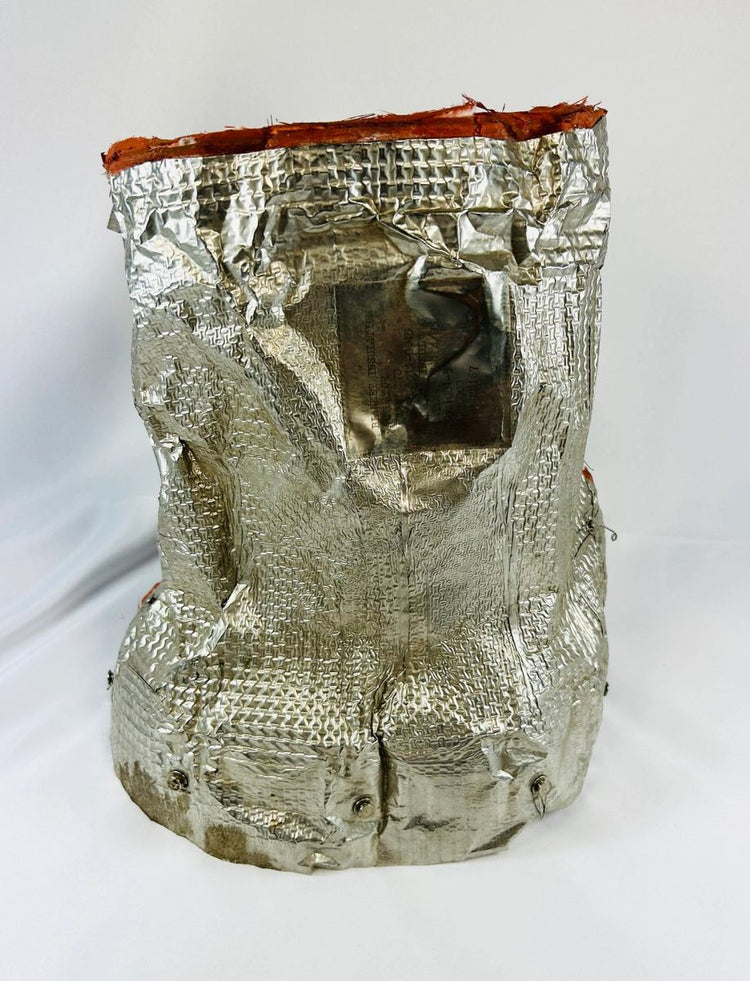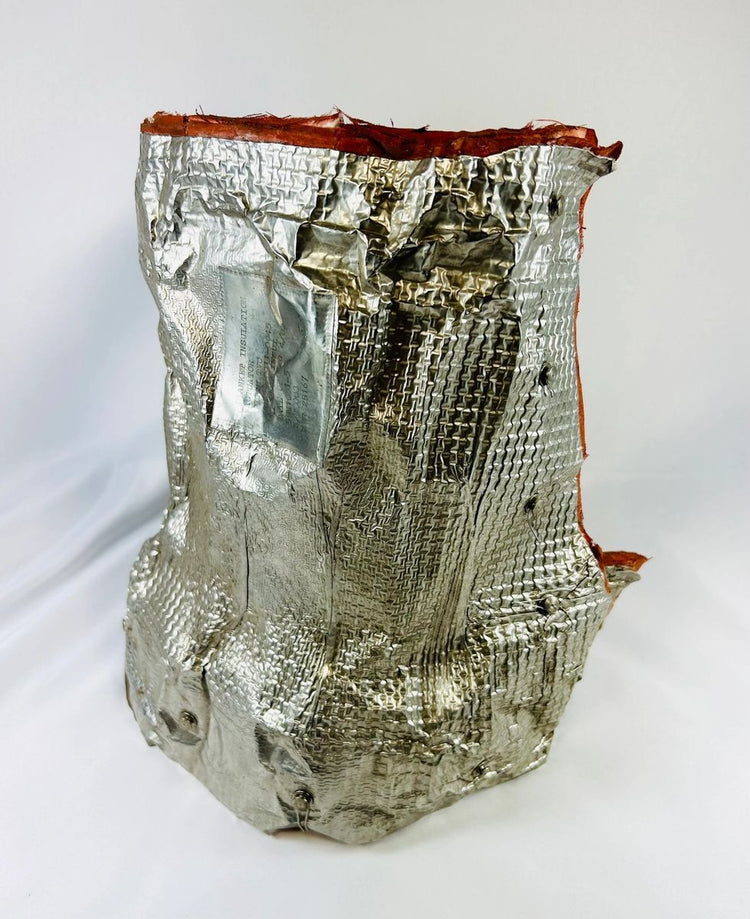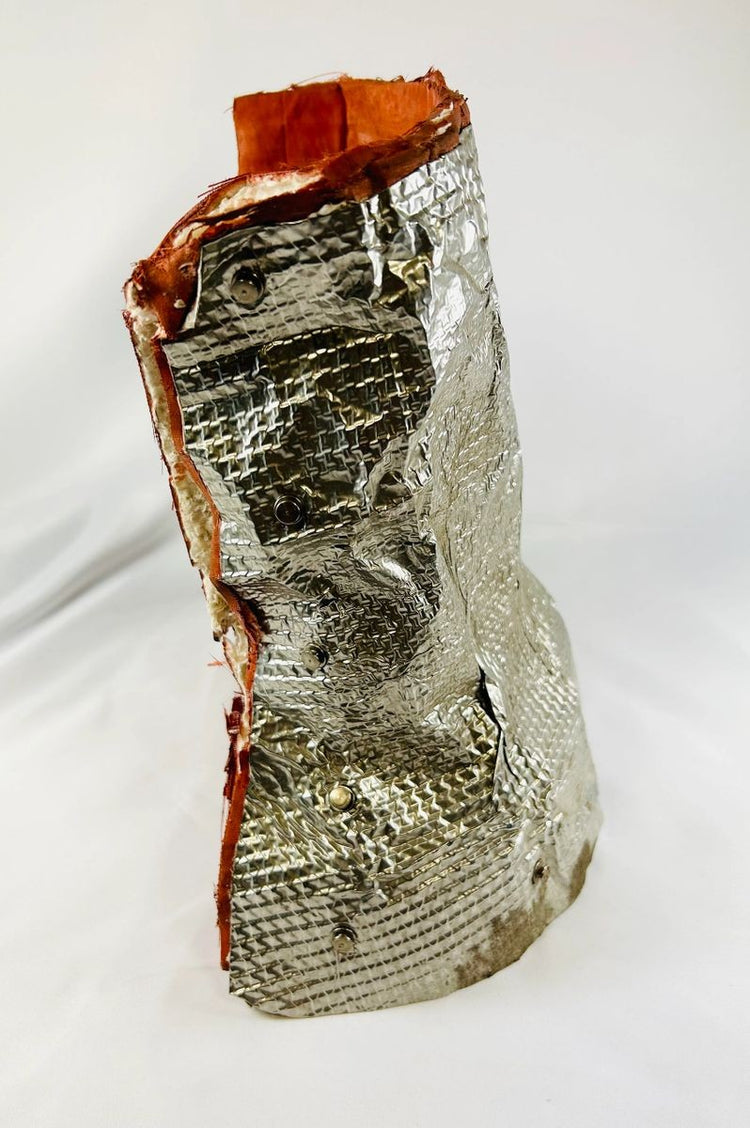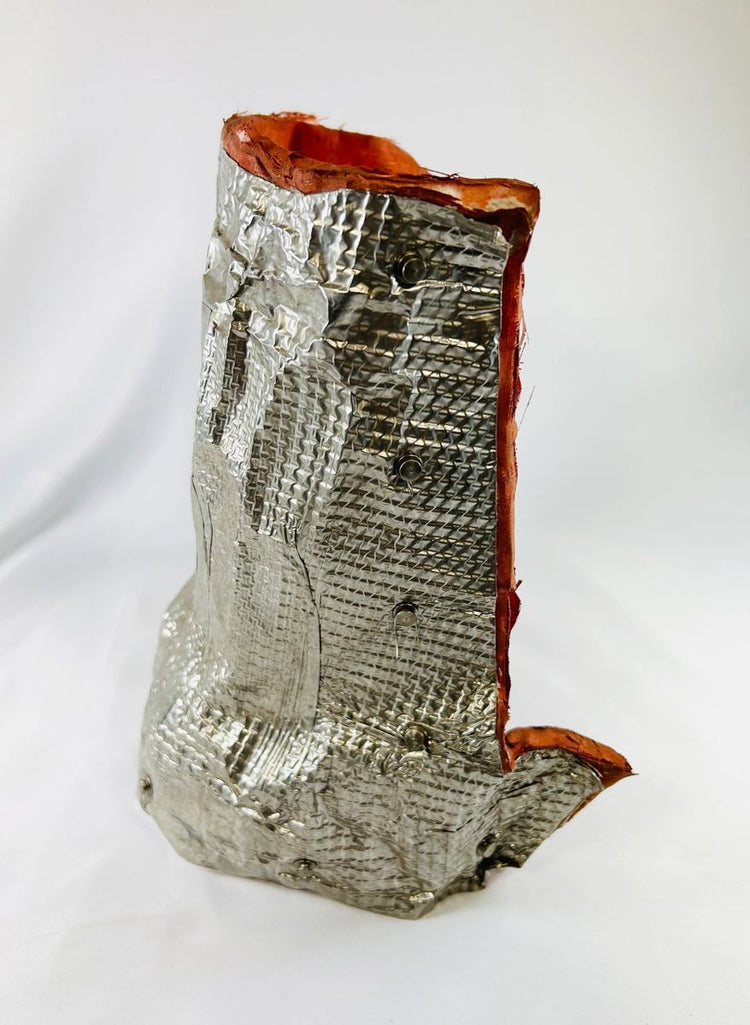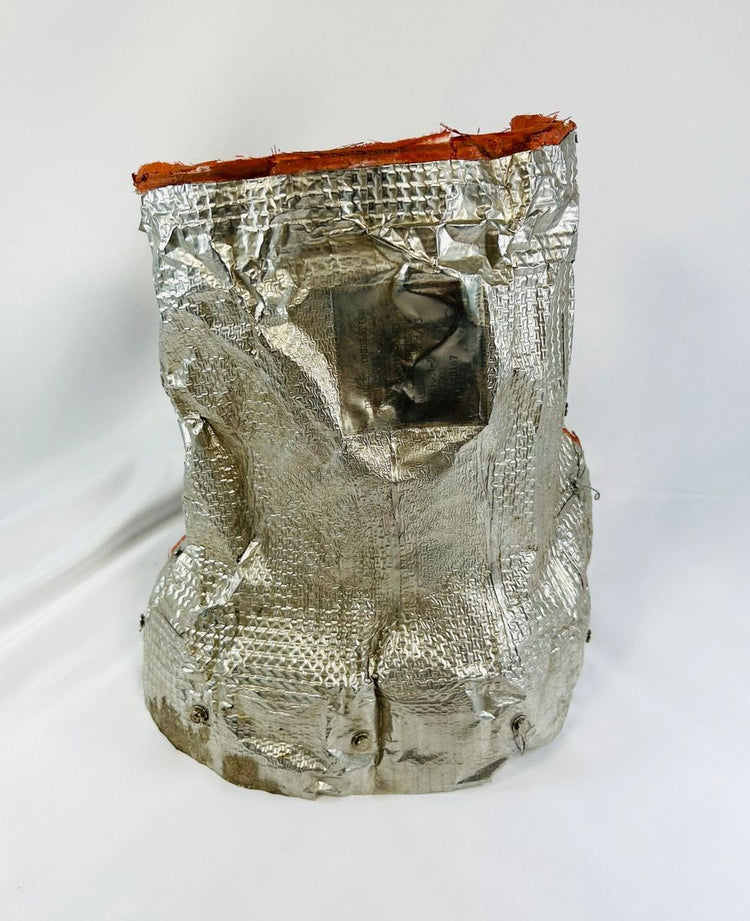Projection télévisée de l'actionneur d'isolation de la couverture de la navette spatiale de la NASA | 1984
Description
Plus
Moins
Contexte historique et origine
Région : États-Unis (NASA, programme de navette spatiale)
Matériau : Ouate de silice fibreuse (isolation de couverture)
Période : avril 1983 (composant de la navette)
Description
Cette rare pièce d'isolation de couverture de navette, mesurant environ 28 cm sur 25 cm, est un véritable artefact du programme de navette spatiale de la NASA. Estampillée de la date de fabrication d'avril 1983, du numéro de série S/N 008 et du code fabricant MFR 25167, elle représente un composant essentiel de l'ingénierie de la navette. Développé à l'origine pour remplacer les dalles d'isolation de surface réutilisables à basse température (LRSI), ce matériau en silice fibreuse, semblable à une courtepointe, offrait une protection thermique avancée tout en réduisant les besoins de maintenance, ce qui en faisait une amélioration essentielle du système de protection thermique de la navette.
Caractéristiques
- Panneau isolant de navette authentique
- Estampillé avec la date (avril 1983), le numéro de série et le code fabricant
- Ouate de silice fibreuse matelassée conçue pour une résistance thermique extrême
- Connexion directe au patrimoine de la navette aérienne
Importance culturelle
La protection thermique était essentielle pour les missions de navette spatiale, notamment lors de la remontée et de la rentrée. Cette isolation protégeait la navette des températures atmosphériques et orbitales extrêmes, témoignant de l'innovation de la NASA en matière de matériaux aérospatiaux. Étroitement liés au contrôle vectoriel de poussée (TVC) et à d'autres systèmes critiques pour la mission, des composants comme celui-ci assuraient la stabilité, la précision de la trajectoire et la sécurité de l'équipage. Élément de l'une des plus grandes prouesses techniques de l'humanité, cet artefact est non seulement une relique technologique, mais aussi un symbole de l'ingéniosité et de l'ambition de l'ère de la navette spatiale.
Condition
Bien conservé avec des marquages d'identification visibles, cohérents avec l'héritage des navettes volantes.
Dimensions (approximatives)
Hauteur : 11 po
Largeur : 10 po
Âge
Avril 1983 (vol d'un composant de la navette)
Description
Contexte historique et origine
Région : États-Unis (NASA, programme de navette spatiale)
Matériau : Ouate de silice fibreuse (isolation de couverture)
Période : avril 1983 (composant de la navette)
Description
Cette rare pièce d'isolation de couverture de navette, mesurant environ 28 cm sur 25 cm, est un véritable artefact du programme de navette spatiale de la NASA. Estampillée de la date de fabrication d'avril 1983, du numéro de série S/N 008 et du code fabricant MFR 25167, elle représente un composant essentiel de l'ingénierie de la navette. Développé à l'origine pour remplacer les dalles d'isolation de surface réutilisables à basse température (LRSI), ce matériau en silice fibreuse, semblable à une courtepointe, offrait une protection thermique avancée tout en réduisant les besoins de maintenance, ce qui en faisait une amélioration essentielle du système de protection thermique de la navette.
Caractéristiques
- Panneau isolant de navette authentique
- Estampillé avec la date (avril 1983), le numéro de série et le code fabricant
- Ouate de silice fibreuse matelassée conçue pour une résistance thermique extrême
- Connexion directe au patrimoine de la navette aérienne
Importance culturelle
La protection thermique était essentielle pour les missions de navette spatiale, notamment lors de la remontée et de la rentrée. Cette isolation protégeait la navette des températures atmosphériques et orbitales extrêmes, témoignant de l'innovation de la NASA en matière de matériaux aérospatiaux. Étroitement liés au contrôle vectoriel de poussée (TVC) et à d'autres systèmes critiques pour la mission, des composants comme celui-ci assuraient la stabilité, la précision de la trajectoire et la sécurité de l'équipage. Élément de l'une des plus grandes prouesses techniques de l'humanité, cet artefact est non seulement une relique technologique, mais aussi un symbole de l'ingéniosité et de l'ambition de l'ère de la navette spatiale.
Condition
Bien conservé avec des marquages d'identification visibles, cohérents avec l'héritage des navettes volantes.
Dimensions (approximatives)
Hauteur : 11 po
Largeur : 10 po
Âge
Avril 1983 (vol d'un composant de la navette)
Vous aimerez peut-être aussi

























